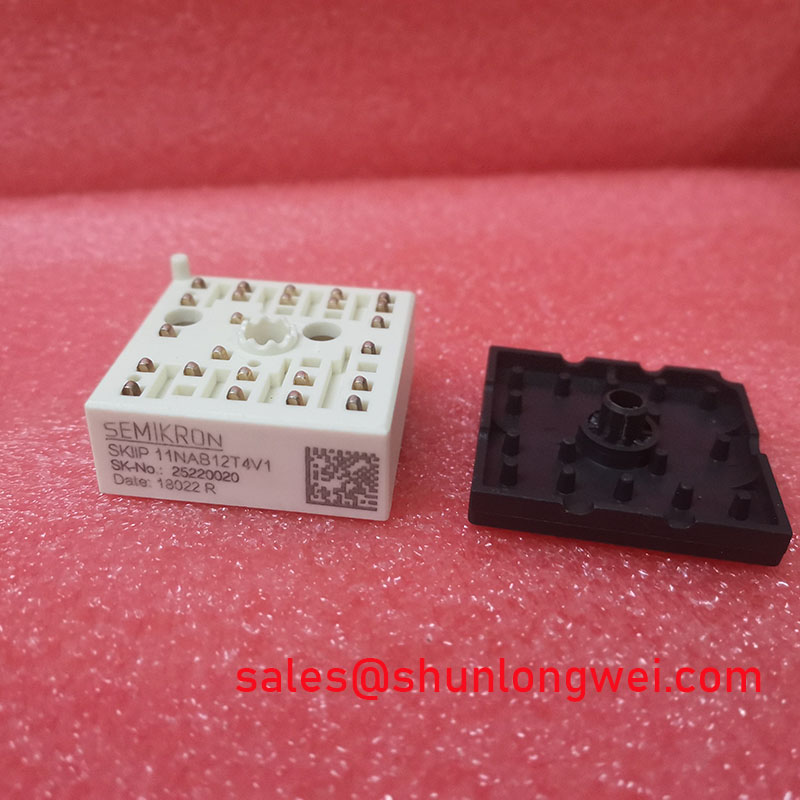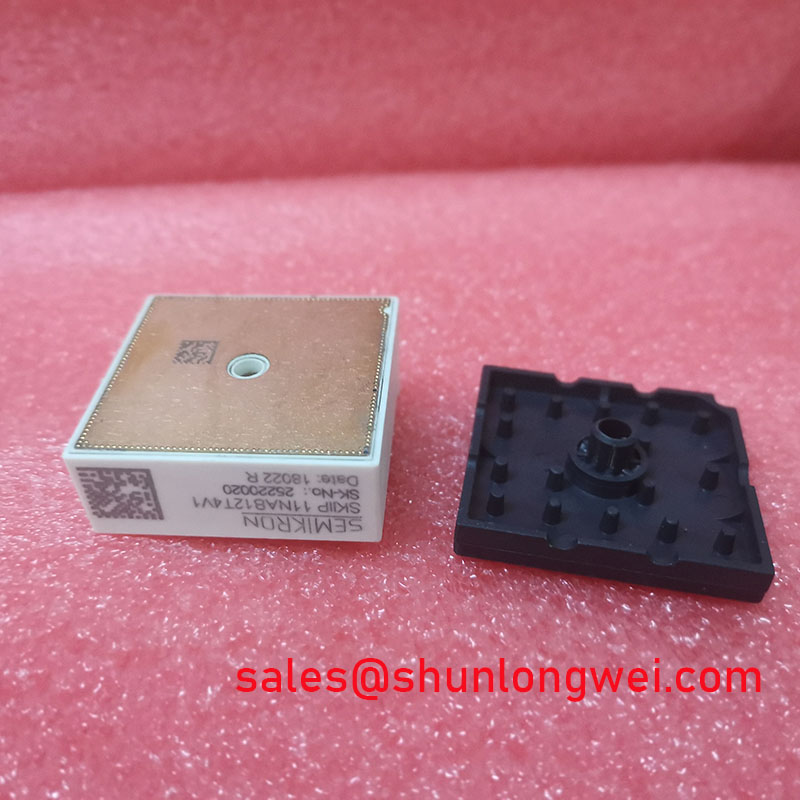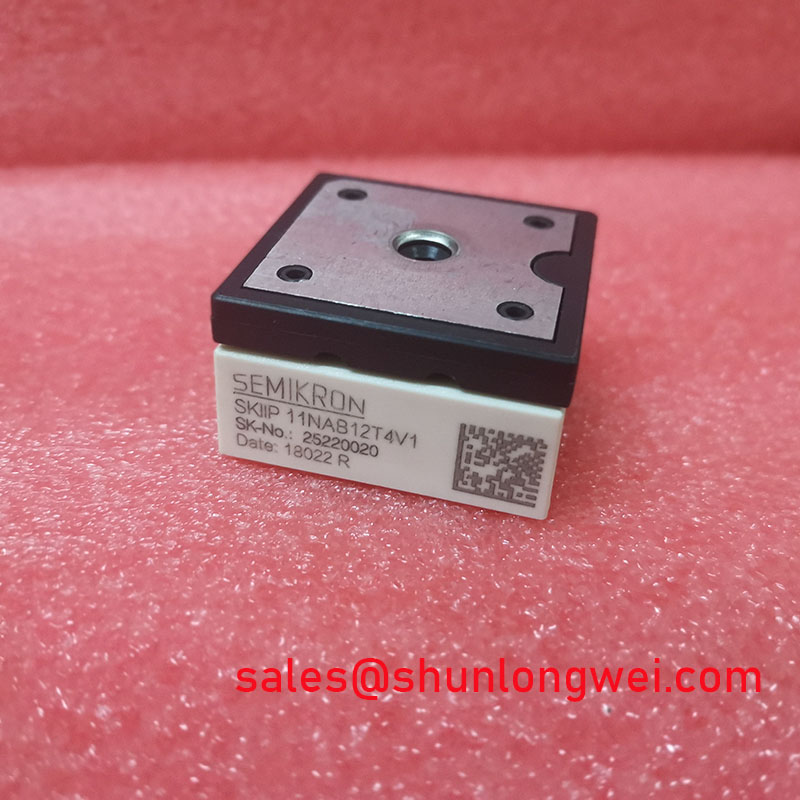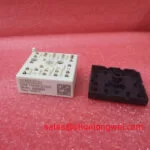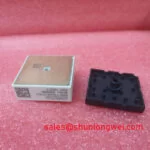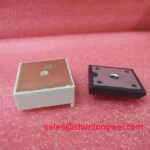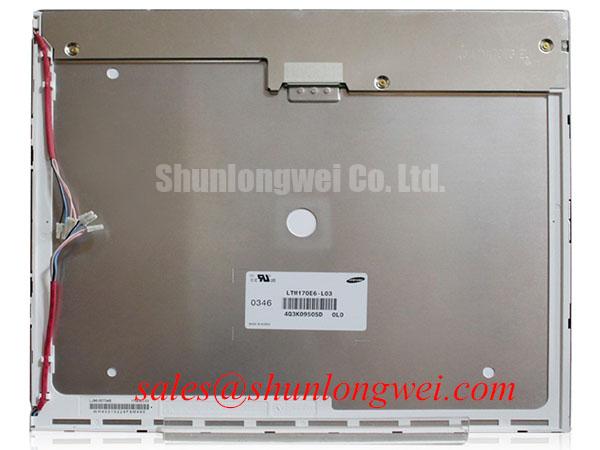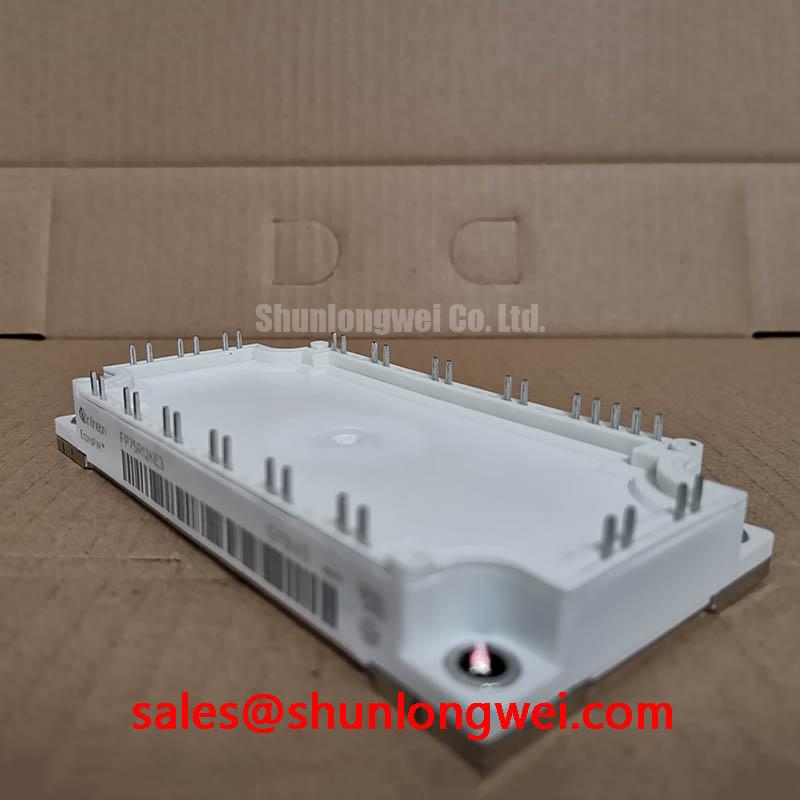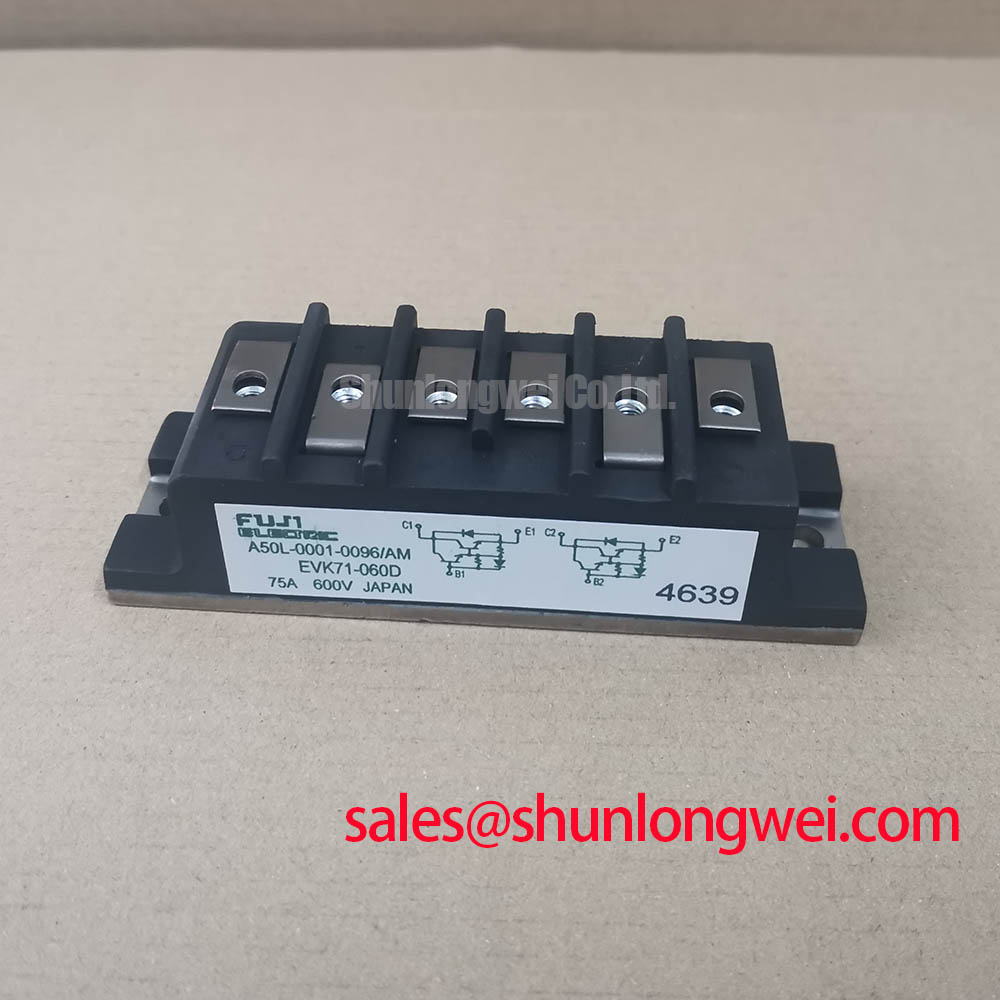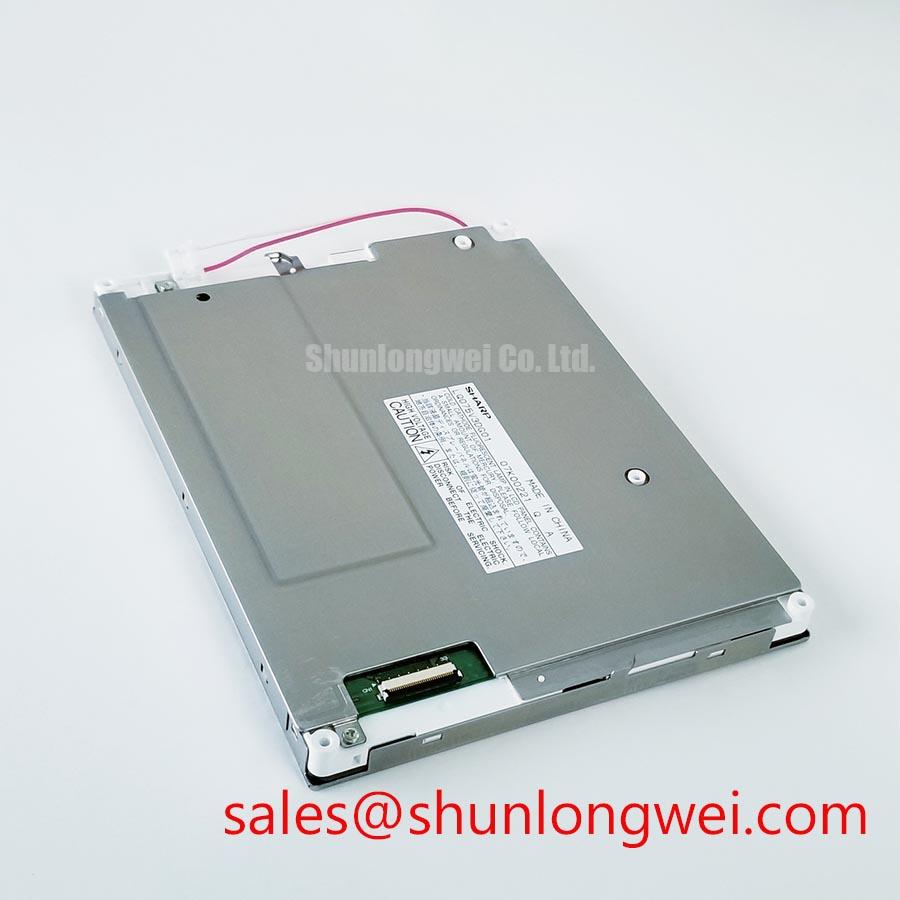SKiiP 11NAB12T4V1 IPM: Streamline Your 1200V Inverter Design
Introduction to the SKiiP 11NAB12T4V1 Power Module
The Semikron-Danfoss SKiiP 11NAB12T4V1 is an intelligent power module engineered to accelerate inverter design and streamline manufacturing. This all-in-one solution delivers a full three-phase inverter stage with key specifications of 1200V and 35A, utilizing advanced Trench IGBT technology. Its primary engineering benefits include a significantly reduced component count and a dramatically simplified assembly process. By integrating the gate driver and employing solder-free pressure contacts, this module directly addresses the need for faster, more reliable manufacturing, eliminating thermal fatigue points associated with traditional soldering.
Industry Insights & Strategic Advantage
Strategic Advantages of a Cohesive Power Stage
In today's competitive industrial market, speed-to-market and manufacturing efficiency are paramount. The SKiiP 11NAB12T4V1 directly supports these objectives by shifting the design paradigm from discrete components to an integrated power stage. This approach mitigates common design risks, such as optimizing a Gate Drive circuit or managing parasitic inductance between the driver and the switches. For businesses, this translates into reduced R&D cycles, a simplified supply chain with fewer part numbers to manage, and lower assembly costs. This level of integration is a key enabler for developing compact, cost-effective, and reliable motor drives and power conversion systems.
Key Parameter Overview
Core Specifications for Simplified System Design
The technical specifications of the SKiiP 11NAB12T4V1 are tailored to facilitate straightforward system integration and ensure robust performance. The parameters below highlight the module's capabilities and their direct impact on your design. The module's thermal resistance, Rth(j-s), acts like the width of a bridge for heat to escape. A lower value signifies a wider, multi-lane bridge, allowing thermal energy to flow away from the sensitive silicon chips to the heatsink with minimal traffic jams, ensuring cooler and more reliable operation.
| Parameter | Value | Engineering Significance |
|---|---|---|
| Collector-Emitter Voltage (V_CES) | 1200 V | Provides a substantial safety margin for applications running on 400/480 VAC lines, ensuring reliability against voltage transients. |
| Nominal Collector Current (I_Cnom) | 35 A | Defines the module's continuous current handling capability, suitable for powering motors up to approximately 4 kW in typical industrial environments. |
| Collector-Emitter Saturation Voltage (V_CE(sat)) | 1.85 V (Typ. @ 25°C) | A low saturation voltage directly reduces conduction losses, which improves overall inverter efficiency and lessens the thermal load on the cooling system. |
| Thermal Resistance, Junction to Heatsink (R_th(j-s)) | < 1.0 K/W (per IGBT) | Indicates highly efficient heat transfer from the semiconductor to the heatsink, simplifying thermal management and allowing for more compact heatsink designs. For a deeper look into this critical parameter, explore why Rth matters in unlocking thermal performance. |
| Short Circuit Withstand Time (t_sc) | > 10 µs | Ensures the module can survive fault conditions for a sufficient duration, allowing the protection circuitry to safely shut down the system and prevent catastrophic failure. |
Download the Datasheet for SKiiP 11NAB12T4V1 for complete technical specifications.
Intra-Series Comparison & Positioning
Positioning for Streamlined Product Development
The SKiiP 11NAB12T4V1 is positioned as a complete, compact power core for low-to-medium power inverter applications within the 1200V class. Its defining characteristic is the high level of integration, which contrasts sharply with discrete designs. A discrete approach would require separate sourcing and design effort for IGBTs, diodes, a gate driver IC, protection circuits, and temperature sensors. The SKiiP 11NAB12T4V1 consolidates these into a single, pre-validated component. For engineers, this means the complex task of component matching and layout optimization is already performed by the manufacturer. What is the primary benefit of its integrated driver? It eliminates external gate drive design and simplifies PCB layout. This makes the module an ideal choice for projects where development resources are limited or a fast path to production is a critical goal. For motor drives up to 4 kW requiring rapid assembly, the SKiiP 11NAB12T4V1's solder-free design offers a tangible TCO advantage over conventional soldered modules.
Application Scenarios & Value
Applications Where Integration Drives Value
The integrated nature of the SKiiP 11NAB12T4V1 provides significant value in applications where assembly efficiency, reliability, and a compact footprint are key drivers for system design. Its feature set makes it particularly well-suited for:
- Industrial Motor Drives: The module's robust thermal performance and integrated protections are ideal for Variable Frequency Drives (VFDs) controlling AC induction motors in conveyor systems, pumps, and fans.
- Servo Drives: In automation and robotics, the module provides the precise and reliable power switching necessary for servo motor control, while its compact size helps minimize the overall drive dimensions.
- Uninterruptible Power Supplies (UPS): The high reliability stemming from the solder-free SKiiP® Technology makes it a strong candidate for online UPS systems where consistent power delivery is crucial.
- Renewable Energy Systems: Suitable for the inverter stage in small-scale solar power converters and battery charging systems. How does the SKiiP 11NAB12T4V1 reduce assembly time? Through single-screw mounting and solder-free pressure contacts.
For designers comparing different power stage solutions, our guide on IPM vs. discrete IGBTs offers further insights into making the optimal choice for your project.
Success Stories / Deployment Snippets
From Component to Core: Implementation Focus
Integrating the SKiiP 11NAB12T4V1 into a power system is fundamentally a process of system-level design rather than component-level circuit engineering. Based on its datasheet specifications, successful deployment hinges on a few key considerations:
- Heatsink Mounting: The single-screw mounting mechanism is designed for fast, repeatable assembly. It is critical to use a calibrated torque wrench to apply the specified mounting force, ensuring even pressure for a low Thermal Resistance and reliable long-term connection.
- Interfacing with Control Logic: The integrated driver operates with standard logic-level PWM signals. The primary design task becomes ensuring clean, low-jitter signals from the microcontroller to the module's input pins and providing a stable, low-noise supply voltage for the driver itself.
- Utilizing On-board Diagnostics: The analog temperature output and DC-link voltage measurement should be connected to the system's main controller. This enables sophisticated control strategies, such as power derating based on real-time temperature, and enhances system safety. For projects requiring different power levels, the related {"0":"SKiiP24NAB12T4V3","1":"https://www.slw-ele.com/skiip24nab12t4v3.html"} offers a similar integrated approach with higher current capabilities.
Technical Deep Dive
Anatomy of an All-in-One Inverter Stage
The SKiiP 11NAB12T4V1 is more than just a collection of components; it's a synergistic system within a single housing. At its heart are six Trench Field-Stop IGBTs, a technology known for achieving a favorable balance between low conduction losses (V_CE(sat)) and reduced switching losses. Paired with these are six SEMIKRON CAL (Controlled Axial Lifetime) freewheeling diodes, which are optimized for soft and fast reverse recovery characteristics. This softness is crucial for minimizing voltage overshoots and electromagnetic interference (EMI) during switching, simplifying the system's overall EMI filtering requirements. The integrated gate driver is precisely matched to the IGBTs' characteristics, providing optimal gate current for fast, controlled switching while incorporating essential protection functions. An integrated NTC thermistor provides a direct, real-time measurement of the module's baseplate temperature, offering a vital data point for thermal management and fault prevention.
Frequently Asked Questions
Technical Inquiries on the SKiiP 11NAB12T4V1
1. What is the function of the integrated DC-link voltage measurement output?
This feature provides a scaled analog voltage signal that is proportional to the DC-link bus voltage. It allows the system controller to monitor the bus voltage in real-time without needing an external high-voltage sensing circuit, simplifying the hardware design and providing a critical input for overvoltage and undervoltage protection algorithms.
2. What are the main advantages of an IPM like the SKiiP 11NAB12T4V1 compared to using discrete IGBTs and a separate driver board?
The primary advantages are design simplification and reliability. An IPM integrates the power switches and the gate driver, which are pre-optimized by the manufacturer to work together. This eliminates complex gate drive design, reduces PCB space, lowers component count, and minimizes parasitic inductance, leading to improved switching performance and lower EMI.
3. How does the pressure contact system of the SKiiP 11NAB12T4V1 handle mechanical vibration and thermal cycling compared to soldered modules?
The solder-free pressure contact system offers superior reliability in demanding conditions. Solder joints can fatigue and crack over thousands of thermal cycles, leading to failure. Pressure contacts maintain a reliable connection through constant spring pressure, making them inherently more resilient to thermal expansion/contraction and mechanical shock, thus extending the operational lifetime of the inverter.
4. Can the integrated NTC sensor be used for direct over-temperature shutdown?
Yes, that is one of its primary purposes. The NTC provides an analog signal corresponding to the module's temperature. This signal should be read by the system's microcontroller, which can then be programmed to trigger a shutdown or power derating once the temperature exceeds a predefined safe limit, protecting the module from thermal damage. A comprehensive understanding of technical specifications is key; you can learn more by decoding IGBT datasheets with our practical guide.
5. What is the typical short-circuit withstand time (tsc) for this module and why is it important?
The SKiiP 11NAB12T4V1 is specified with a short-circuit withstand time greater than 10 microseconds. This rating is a critical safety parameter, defining how long the IGBT can endure a direct short-circuit across the output before permanent damage occurs. This 10µs window provides a crucial buffer for the integrated driver's protection circuit or the external system controller to detect the fault and initiate a safe shutdown.
Engineering Perspective on System Integration
Adopting an integrated power module like the SKiiP 11NAB12T4V1 fundamentally elevates the engineering focus. It allows design teams to abstract the complexities of the power semiconductor physics and gate drive optimization, which are expertly handled within the module. This frees up valuable engineering resources to be invested in higher-level system enhancements—such as developing more sophisticated motor control algorithms, improving user interface and connectivity features, or accelerating qualification and testing. The future of efficient power electronics design lies not just in better silicon, but in smarter integration that maximizes engineering productivity and system value.

